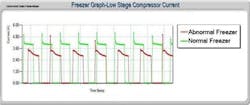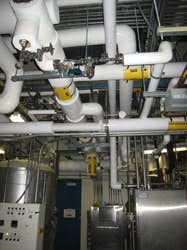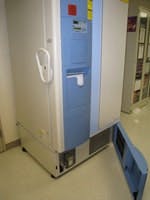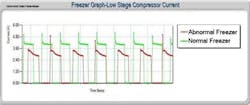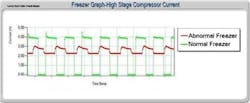Non-invasive Wireless Monitoring Provides Fast Payback
May 31, 2009
5 min read
One of our goals in the Corporate Facilities Services group at Genentech is to attain world-class operation. We particularly focus on continuous improvement of facilities and maintenance systems to reduce operating costs. Driving down these costs enables the company to allocate more funds for developing the product pipeline and achieving its mission of meeting unmet medical needs.
Figure 1. Steam Trap Monitoring:
Wireless data indicated serious
problems with a quarter of the traps.
Figure 2. Crucial Freezer:
Amperage data provided by
monitor enabled detection of
imminent failure.
Table 1: How Monitoring Options Compare
| Factor | Traditional | Non-invasive Wireless |
| Plant disruption |
Necessary wiring required
|
No Process Interruption
|
| Reliability |
Power source needed
|
Battery operated
|
| Engineering |
Changes exisiting system
|
No changes to exisiting system
|
| Infrastructure |
May require new software |
Interface available for
|
| Cost |
$3,000--$5,000/point |
$750--$1,500/point |
Figure 3. Low-Stage Compressor Amperage: Profile of abnormal freezer
indicates a potential refrigerant leak.
Figure 4. High-Stage Compressor Amperage: Data for abnormal freezer
points to an electrical problem.
About the Author
Chris Stubbs
Genentech
Sign up for our eNewsletters
Get the latest news and updates
